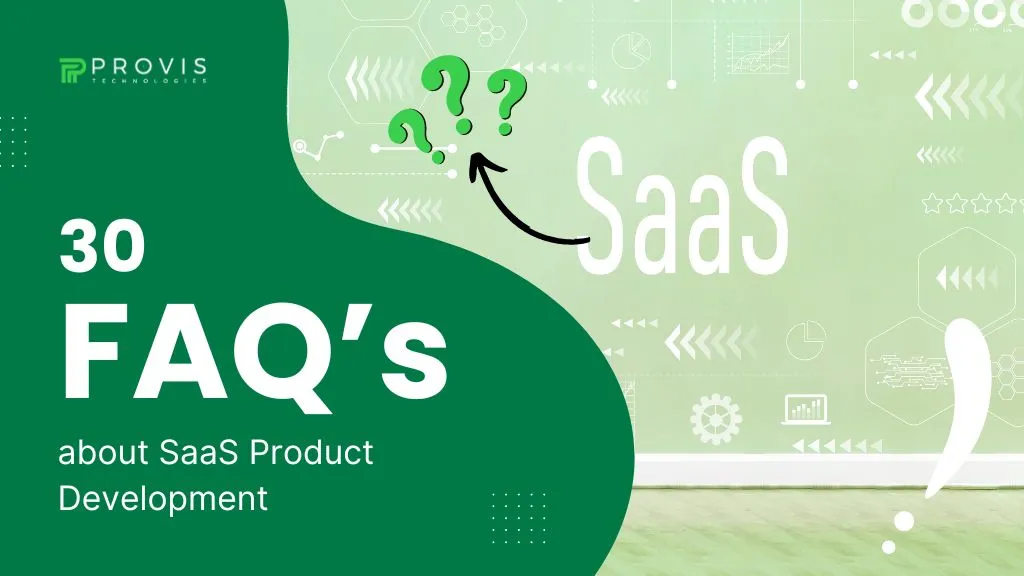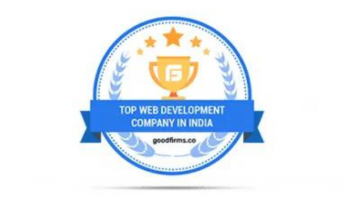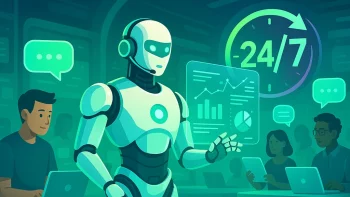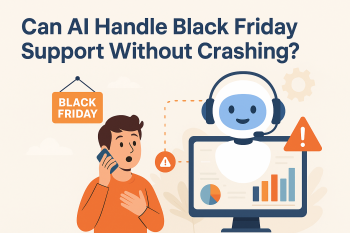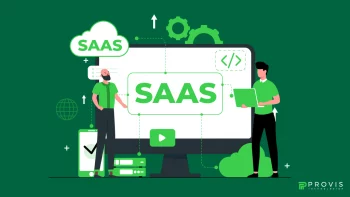The SaaS cloud service revolution has impacted the IT industry like no other technology has – for good. We are including these figures to support our statement: last year, the SaaS market revenue touched the $258.6 billion mark, according to Statista Market Insights. This figure is expected to rise to $282.2 this year and $374.5 billion by 2028. No surprise that companies are eager for SaaS development. Saas application development has become a trend, and these days, you can see SaaS products in almost every IT company. It’s an opportunity for both SaaS development companies and SaaS developers. Let’s check out these FAQs to learn more about SaaS product development.
What is SaaS?
Software as a Service is called SaaS in short. SaaS offers the flexibility to use a service, an application, or a system on the cloud. The user of a SaaS service can access & use it via a web portal or a mobile app. She doesn’t necessarily need to install or download the content on her device. Everything is on the internet. Let’s understand this with an example:
Netflix
You can access Netflix via a web browser or Netflix app and enjoy the content by streaming it online. You don’t need to download movies or series’ on your device – only visit the Netflix platform and have fun. That’s SaaS!
What is the difference between SaaS & traditional app development?
Many factors define the significant difference between traditional & SaaS application development. Let’s have a quick look at these differences:
SaaS apps are made to be on the cloud (internet). Multi-tenancy architecture, scope of scalability, and automatic updates & maintenance – come with a SaaS application. Everything is supposed to be handled by the app service provider and not the user. These apps generally run on either subscription-based pricing or a pay-as-you-go model.
On the other hand, traditional apps are developed to be installed individually on users’ devices. The focus remains on compatibility and operating systems & hardware configurations. These apps are made to be sold, used, & operated by individual users. So, owners of the apps are responsible for updates & all.
What are some other known examples of SaaS applications?
Some popular SaaS applications are Google Drive, Gmail, Microsoft 365, Amazon AWS, Oracle, Salesforce, Adobe, Intuit, Hubspot, Slack, Shopify, Zoom, GitHub, etc. Ain’t you use these apps regularly.
What is the primary difference between SaaS & Cloud?
Cloud technology is a complex infrastructure that includes various computers & servers accessible over the internet. On the other hand, SaaS refers to software applications precisely designed for business needs that operate via cloud technology. Cloud services often support the underlying infrastructure for SaaS applications.
What is a Private Cloud?
A private cloud functions similarly to a public cloud but restricts access to computing resources and data within a single organization or its users – rather than sharing them publicly.
Will my SaaS data remain secure?
Data security is a critical concern in cloud technology. Modern SaaS app development agencies like Provis Technologies leverage best practices for security features. They often conduct audits of their hosting providers to ensure high levels of data center security.
What if my SaaS vendor goes out of business?
If your SaaS vendor shuts down, they typically prepay their hosting provider to ensure your data remains safe & accessible. This upfront payment covers ongoing data security & availability. Include these when your SaaS app development is happening.
What are some challenges faced by SaaS applications?
SaaS systems rely heavily on a stable internet connection for optimal performance. While downtime can’t be entirely avoided, some vendors offer offline capabilities to reduce dependency on internet availability. Compatibility with different operating systems can also be a concern.
What is the role of APIs in SaaS development?
Short for Application Programming Interfaces, APIs bring new features & functionalities into the application they are incorporated into. APIs can also connect third-party services in any app after integration.
For example:
Provis Technologies developed & integrated several APIs for a UK-based 110-year-old football club named CAFC in their application. The job of those APIs was to fetch real-time football league data from third-party sources and present it to CAFC’s users. That’s what APIs do in SaaS development or any SaaS app development.
What is multi-tenancy in SaaS?
Multi-tenancy – if you notice, this word is derived from multiple tenants. If you look at the meanings, you will understand. For a clear understanding, let us give you an example: suppose there is a house. In this house – reside some families. This means that one house is being used by various users – all using the same roof but in separate portions. A SaaS app is just like that. It’s one app, but millions of users can access it on the cloud and use it as if it’s their own – installed on their devices. Like Netflix, when you visit Netflix, do you ever feel that the movies there are not on your device? Never! That’s what multi-tenancy architecture is.
How do I ensure my SaaS product is secure?
You must leverage security best practices to ensure your SaaS app’s security. It’s vital you use high-grade security measures like data encryption, regular security audits, MFA, user authentication mechanisms, and more. SaaS apps generally have to store sensitive & crucial data – so you must leave no stone unturned in making your SaaS app secure. You can also connect with SaaS app development experts like Provis Technologies to audit your SaaS product and fix the loose ends.
What are some key features of a successful SaaS product?
Take care of UI/UX, scalability, reliability, security, support, features, ease of use, marketing, and simplification – nothing can stop your SaaS app from success. This is the time when the SaaS market is at its peak. It’s the best time to join the market with a quality app. Look at this figure – the global SaaS market is projected to cross a staggering $317.55 billion mark by the end of this year (2024). Get modern features like visual/voice search & AI into your app and see the changes.
How necessary is market research in SaaS development?
Market research is the key to success. One of the most essential things to be done before you begin your SaaS product development. You must understand your users & their requirements and build your SaaS app accordingly. You must also know your competition and their products to get an edge in the market.
What is a minimum viable product (MVP)?
MVP is the most basic version of an application, which is not fully completed or featureful yet but can fulfill the early users’ needs. MVP is done by startups or for experimental projects – the goal is to make money and reinvest for further development or get to know what users want and then develop accordingly.
How do I start developing a SaaS product?
You can begin with an idea. Then, research the market, hire a team, plan with the team to build a roadmap, design prototypes, start development, build MVP (if budget issues or doubt), test the app, and deploy. Gather feedback, rework, & update. SaaS app developers like Provis Technologies are experts in SaaS app development and know IT to the core.
How do I manage user authentication in my SaaS product?
Deploy password-based authentication, open authorization (OAuth), two-factor authentication (2FA), and single sign-on (SSO) to manage secure user authentication. These methods work best, and most giant applications use them.
What should I price my SaaS product?
First, research the market and understand the market prices and conditions. Know your competitors and their pricing structures. Know your users and their expectations and demands. Consider your investment and ROI – and then price accordingly. You must set the pricing model also for your SaaS app.
What is the subscription-based pricing model?
When a user pays a fixed recurring charge monthly, quarterly, annually, or for any fixed period – the model is a subscription-based pricing model.
What is the freemium pricing model?
Let’s understand this quickly with an example – if you know Grammarly – Grammarly offers some general services for free, but to access all its advanced and extensive features, you must pay a price, meaning you must subscribe – the model is a freemium pricing model.
How do I market my SaaS product?
Either hire a marketing agency or a sales team to market your SaaS app. But if you wanna do it on your own, many effective practices you can use, like content marketing, social media marketing, email marketing, SEO, and paid advertising to reach your target audience.
What is the customer onboarding process in the SaaS app?
It means you help your users understand the app features, pricing model, and everything. You must keep this process simple for your users so they can join and start using your product. The graphics & the copies have to be clear & precise. The support team must always be active to help users with queries & support.
What is SaaS app scaling?
Scalability is the core and unique feature of SaaS applications. It simply means that users can adjust the app’s resources or pricing model as and when they like. This is the primary difference between a SaaS app and a traditional app. This flexibility is what users need.
What are the future trends in SaaS development?
Modern technologies like AI, ML, IoT, low-code/no-code, and more will be seen more in the SaaS space.
How do I ensure my SaaS product can scale?
Leverage scalable technologies & tech stacks to ensure your SaaS app can scale.
How many types of SaaS models are there in the SaaS space?
It’s like your app, your pricing model, so there’s no fixed rule or model. Still, the two most popular models are:
Subscription-based
Pay-as-You-Go
How do I know if my SaaS app is a market fit?
Research the market and know your audience. Remember that if your SaaS product solves a problem – it is a market fit and can succeed.
What technologies are used in SaaS app development?
Programming Languages
JavaScript
Python
Ruby
Java
Backend Frameworks
Ruby on Rails
Node.js
Spring Boot
Django
Databases
Relational Databases (MySQL or PostgreSQL)
NoSQL Databases (MongoDB or Cassandra)
Frontend Technologies
HTML, CSS
React, Angular, or Vue.js
Cloud Platforms
Amazon Web Services (AWS), Microsoft Azure, or Google Cloud Platform
Which is the best SaaS app development agency in India?
Many are there – Provis Technologies is one of the best SaaS app development agencies in India and abroad – with a proven track record and a team of tech elites.
What are the different types of cloud services alongside SaaS?
Three types of cloud services are there:
- SaaS (Software as a Service)
- IaaS (Infrastructure as a Service)
- PaaS (Platform as a Service)
What if I need SaaS app support?
Connect with Provis Technologies. Provis Technologies offers extensive support and all kinds of SaaS app development services. The multinational IT company also integrates AI into the existing applications & platforms.
Written By
Author's Picks
- SaaS Trends 2024: What’s Next in Development?
- 31/01/2024
- Top 15 Software Development Trends to Follow in 2025
- 31/01/2025
- How to Build a Custom and Scalable AI SaaS Product | A Step-by-Step Process and Cost Estimation for Businesses
- 04/10/2024
Categories
- AI for Startups
- AI in Web Development
- AI Integration
- AI Platforms
- AI Prompt
- AI Tools
- AI Trading Software
- Android App
- Android vs iOS Development
- Angular
- API
- API Development
- App
- app development
- App Idea
- App User Feedback
- Application
- Artificial Intelligence
- Audit Services
- Automotive Industry
- Awards and Recognition
- Business Consulting
- Business Website
- Chatbots
- CRM
- CRM for Financial Advisors
- Custom CRM
- Custom SaaS
- Custom Website
- Customer Service
- dashboard design
- Developing a Mobile App
- Digital Business
- E-commerce
- EMR Integration
- Finance
- Financial Advisors
- Financial Advisors
- GIT
- Health Insurance
- iOS App
- iOS App Development
- IoT Mobile App Development
- IoT Platforms
- IT Audit Services
- IT Consulting
- IT Strategies
- Java Development
- Laravel
- Lean Canvas
- Learning Management System
- Logistics Apps
- Mobile App Development
- MVP
- Native App
- News Aggregator Site
- OTT
- Outsourcing IT
- Payment Gateway
- predictive analysis
- Product Launch Strategy
- Progressive Web App (PWA)
- Prototype
- Recommender Systems
- Ruby
- SaaS
- SaaS Application
- SaaS Business
- SaaS Company
- SaaS Development
- SaaS Product
- SaaS Project
- Sales Funnel
- SEO
- Shopping Cart
- Software Development
- SSL and TLS
- Startup Checklist
- Technology
- Tetradic Color Scheme
- UI/UX Design Company
- Unit Testing
- User Flow
- User Testing
- Web Development
- Web Performance Optimization
- website Maintenance Services
- Website Migration Service
- Website Speed Optimization
- WooCommerce
- WordPress
